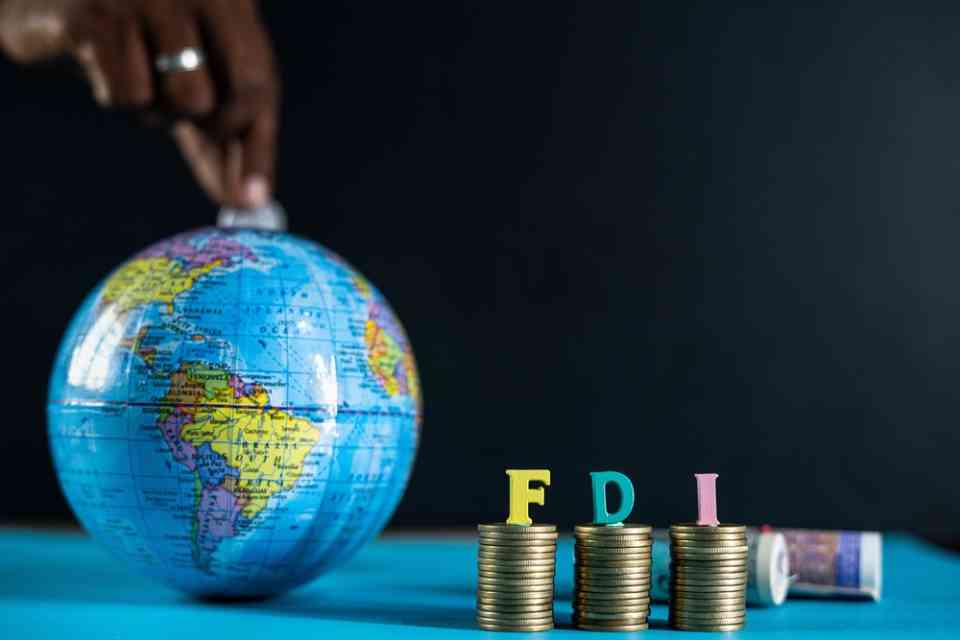FDI fell around 8% in 2024
The UNCTAD report suggests the semiconductor boom drove project values despite decreases in project numbers.
Foreign direct investment (FDI) flows fell by around 8% in 2024, excluding flows through European conduit economies, according to the latest report from the United Nations Conference on Trade and Development (UNCTAD).
Including FDI in European conduit economies (transfer locations before investment reaches its final destination), FDI grew by 11% to $1.4trn in 2024.
FDI flows varied widely by region and sector. In developed economies, multinational investments fuelled a 43% increase in FDI, without which flows dropped 15%. in developing economies, FDI decreased by 2%. This decline complicates these countries’ abilities to make progress on the UN’s sustainable development goals (SDGs), which tend to be reliant on international finance flows.
FDI related to the SDGs fell by 11% in 2024. On one hand interest in renewable energy, health and education rose, but investments in water, sanitation, agri-food systems and infrastructure decreased.
The report’s FDI outlook for 2025 was moderately optimistic but highlighted that growth would vary heavily by region.
In North America, FDI intake grew by 13%. In developed countries, cross-border mergers and acquisitions (M&A) deals increased by 19% to $364bn. Both of these trends were driven by big-value M&A deals in the US, where there was an 80% surge.
Across the Atlantic, major European economies mostly experienced decreased inflows, excluding flows in conduit economies. France went down by 13%, Germany and Poland 60%, Italy 35% and Spain 6%. In the EU, 18 out of 27 members had decreased inflows.
While the number of greenfield project announcements decreased by 10% in developed economies with around 1,000 fewer projects, their overall value still increased (+15%) mainly driven by a large number of major investments in semiconductor sectors. However, the US did experience a 10% growth in project announcements. Project values saw significant growth in developed countries such as the US (93%), the UK (+32%) and Italy (+71%).
FDI to developing countries continued its downward trend from 2023, when it decreased by 6%, and fell by 2% in 2024. Project announcements declined by 6% with a starker drop in project value of 24%. The report highlighted that FDI project numbers declined in major emerging economies like Brazil, China, India, Indonesia and Mexico at a substantially higher rate than the global average.
M&A cross-border deal value in developing countries, which usually accounts for a small amount of their FDI intake, also declined sharply, falling by $50bn from 2023.
FDI into China decreased by 29%, following its 2023 downward trend. Inflows have fallen 40% since their peak in 2022.
The Association of Southeast Asian Nations (ASEAN) includes Brunei Darussalam, Burma, Cambodia, Indonesia, Laos, Malaysia, the Philippines, Singapore, Thailand and Vietnam. In this group, FDI grew by just 2% but reached an estimated record of $235bn. India saw a rise of 13% in FDI, increasing in both numbers and overall value.
FDI flows into Africa increased massively (by 84%) and reached around $94bn. However, slightly less than half of this intake was driven by a single project in Egypt, where a United Arab Emirates sovereign wealth fund is investing in the development of the Ras El-Hekma peninsula. Excluding this project, inflows stood at $50bn and increased by 23%.
In Latin America and the Caribbean, FDI flows decreased by 9%. This was partly a result of higher energy prices in 2024. However, some countries like Brazil, Argentina and Colombia experienced a higher number of projects and FDI values.
Semiconductors were central in driving increases in project values in 2024. Out of the ten biggest FDI project announcements of the year, four were in the semiconductor sector. Production of coke and refined petroleum also drove up project values, with Malaysian energy company Petronas’ $30bn investment in Argentina taking the top spot for the largest greenfield project announced in 2024.
The US and India also reached record levels of manufacturing investments. In the US, this was driven by semiconductor and automotive projects. In India, this was mainly driven by semiconductors and basic metals projects. The growth of digital services and the development of AI infrastructure has also increased the need for digital infrastructure to support it.
UNCTAD expects there to be room for some FDI growth in 2025, contingent on location, sectors and other factors. More inflows are expected in the US and the EU. Regions that are near developed markets such as ASEAN, eastern Europe, west Asia, North Africa and some of Central America may be able to capitalise on the rise of nearshoring. The energy transition, the growth of AI and technological development will continue to be central in shaping global FDI flows.
A greater focus on investments in domestic and geopolitically aligned countries will also redirect flows. The increases in FDI screening seen in the US and Europe in sectors like defence, technology and critical infrastructure will likely continue.





